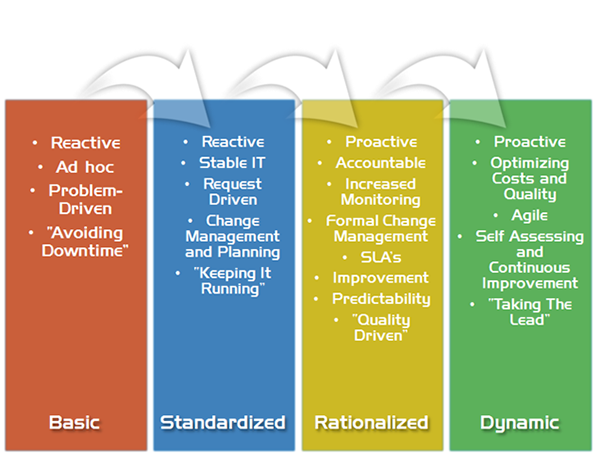Get to Know Microsoft’s Infrastructure Optimization Model
In order to help companies to establish business continuity, Microsoft used its experience with customers along with the industry best practices to develop a model that provides a framework to identify the people, the processes and the technology of an IT infrastructure, the Infrastructure Optimization Model (IOM). This model also describes four levels of maturity through which these IT resources can evolve to increase increasingly strategic value to the organization: 
- Basic – manual processes; no central control; reactive security; management and services with high intervention and high cost for users.
- Standardized – some standards and policies; more central control; limited use of automation; still reactive security; management and services with intervention and average cost required for users.
- Rationalized – automatized; processes are centrally controlled; proactive security; administration and services without intervention to users; IT policies are beginning to support and expand the businesses.
- Dynamic – management and services fully automated to users; Service Level Agreements linked to business; ability to adopt and innovate quickly with new technologies, in order to meet strategic needs.
So, the Infrastructure Optimization Model from Microsoft helps customers understand and subsequently improve the current state of their IT infrastructure and what that means in terms of cost, security risk, and operational agility. Dramatic cost savings can be realized by moving from an unmanaged environment towards a dynamic environment. Security improves from highly vulnerable in a “Basic” infrastructure to dynamically proactive in a more mature infrastructure. IT infrastructure management changes from highly manual and reactive to highly automated and proactive. Also, processes move from fragmented or nonexistent to optimized and repeatable. A customer’s ability to use technology to improve their business agility and deliver business value increases as they move from the Basic state up the continuum toward a “Dynamic” state, empowering information workers, managers, and supporting new business opportunities.















